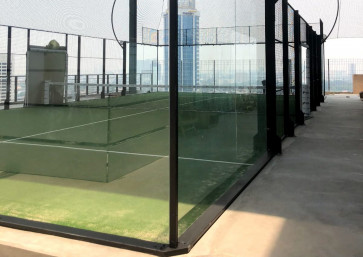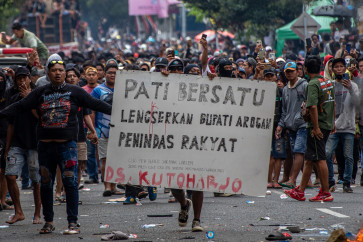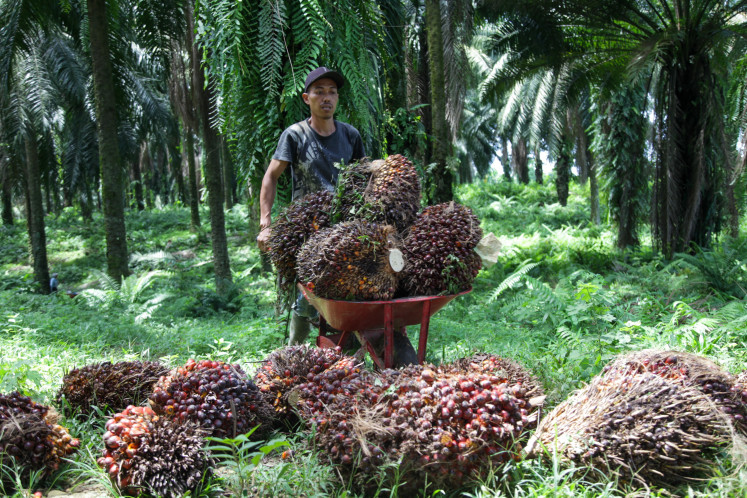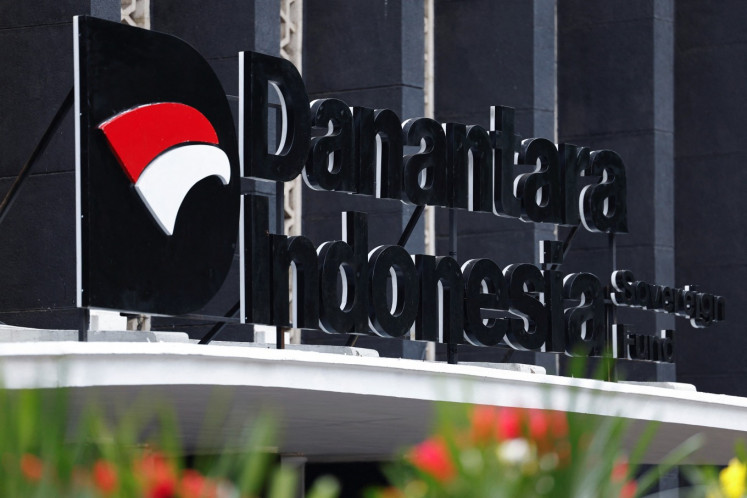Popular Reads
Top Results
Can't find what you're looking for?
View all search resultsPopular Reads
Top Results
Can't find what you're looking for?
View all search resultsBNI sets out measures to push down bad loans
State-owned lender Bank Negara Indonesia (BNI) has prepared several measures in its attempt to reduce the amount of bad loans in its portfolio, hoping to cut down the non-performing loan (NPL) ratio to below 3 percent by year-end
Change text size
Gift Premium Articles
to Anyone
S
tate-owned lender Bank Negara Indonesia (BNI) has prepared several measures in its attempt to reduce the amount of bad loans in its portfolio, hoping to cut down the non-performing loan (NPL) ratio to below 3 percent by year-end.
The major bank saw both of its gross and net NPL rates unchanged in the first half, with gross NPL staying at 3 percent and net NPL at 0.7 percent, as shown by its latest financial results.
BNI president director Achmad Baiquni said it would immediately restructure some of its loans if they showed worsening quality. The move is a priority, especially toward maturing loans.
“Last year, after we saw that our NPL ratio had increased, we took a closer look at borrowers whose debt qualities were declining. Now our NPL ratio is steady and lower than the banking industry average,” he said in a press conference on Friday.
BNI was forced to increase its loan provisions as a result of the declining quality of credit disbursed to mobile phone retailer Trikomsel Oke. The bank’s loan exposure exceeded Rp 1 trillion (US$76.32 million).
Data from the bank show that loans in the corporate and medium-sized business segments dominated the restructuring efforts, while manufacturing, trading and mining were the top three economic sectors that seemed to suffer the most throughout the past year.
In terms of collectability, it saw loans within the special mention category rise almost 30 percent on an annual basis, a reflection of difficulties faced by the bank’s clients during a slowing economy.
These loans will be immediately included in the overall NPL calculation should they deteriorate further and fall into the substandard category.
Baiquni said it had also jacked up BNI’s coverage ratio to allow the bank to handle a wider scope of worsening debt. The coverage ratio climbed to 142.8 percent in the first half from 138.8 percent in the previous year.
“We always increase our coverage ratio [from year to year], said BNI finance director Rico Rizal Budidarmo.
He was upbeat the efforts would help BNI — the fourth largest lender in terms of assets — reduce the gross NPL ratio to below 3 percent in 2016.
The Financial Services Authority (OJK) noted the overall declining quality as it recorded a higher NPL ratio of 3.1 percent in May, an increase from 2.9 percent compared to April.
Meanwhile, unlike its peers, BNI did not revise its lending growth projection as first half data fueled optimism of improved business for the remaining five months of the year.
It maintains its growth target at 17 to 18 percent, with outstanding loans expected to reach at least Rp 381.54 trillion.
First-half data reveal that it had actually achieved more than 90 percent of that target during the six-month period.
Annual loan growth jumped 23.7 percent from January to June, much higher than the 12.1 percent rate posted exactly a year ago.
The business banking sector contributed 73 percent to BNI’s total outstanding loans, while consumer loans accounted for 17.1 percent.
It also saw its micro credit program loans (KUR) grow almost fourfold to Rp 7.3 trillion compared to last year.
“We opened new branches across the country and that partly contributed to the rise of KUR disbursement,” Baiquni said.
The robust business led to the bank controlling a relatively stable net interest margin (NIM) of 6 percent.
However, it was its non-interest income that eventually pushed BNI’s profits to almost double to Rp 4.37 trillion at the end of June. (mos)










